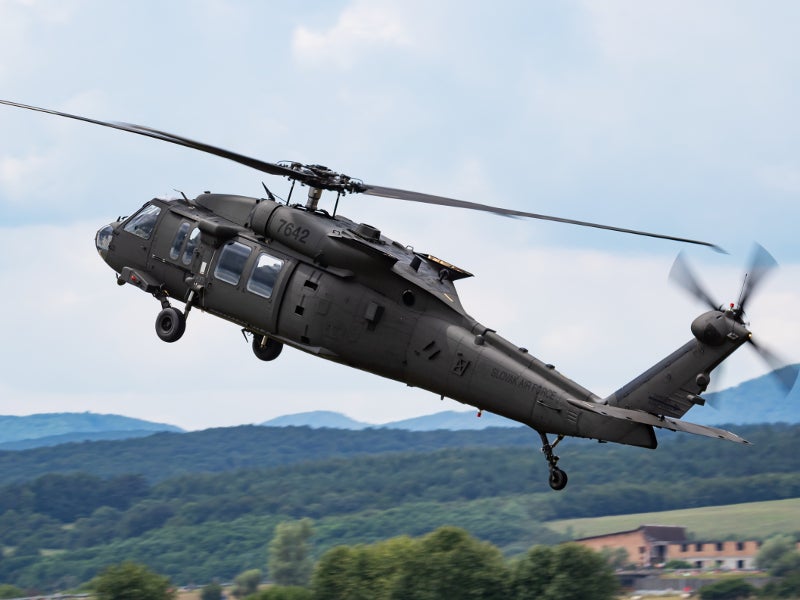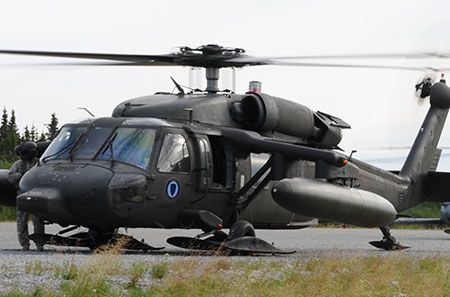Unlocking Peak Performance: UH 60 Helicopter Upkeep Guide
Unlocking Peak Performance: UH 60 Helicopter Upkeep Guide
Blog Article
Understanding the Mechanics and Design Behind Uh 60 Helicopters
The UH-60 helicopter, commonly known as the Black Hawk, stands as a pinnacle of contemporary rotorcraft technology, embodying a mix of durable design and detailed mechanics. As we peel back the layers of the UH-60's layout, a world of detailed systems and meticulous design comes to light.
History of UH-60 Helicopters
The history of UH-60 helicopters traces back to the late 1970s when the USA Army sought a sophisticated and functional energy helicopter to change its aging fleet. In feedback to this requirement, the Sikorsky Airplane Company created the UH-60 Black Hawk helicopter. Introduced in 1979, the UH-60 swiftly became a staple in army operations due to its excellent abilities.
The UH-60 was made to succeed in a variety of objectives, consisting of army transportation, medical discharge, digital warfare, and unique procedures. Its capability to adapt to various duties made it a valuable asset to the U.S. uh 60. Army and various other military forces all over the world
Over the years, the UH-60 system has undertaken numerous upgrades and variations to boost its performance and maintain pace with progressing objective needs. These helicopters have seen considerable solution in disputes such as the Gulf War, Afghanistan, and Iraq, showcasing their integrity and flexibility in diverse functional environments. The UH-60's rich background is a testimony to its long-lasting legacy as a premier utility helicopter.

Engine and Power Solutions
Making use of cutting-edge propulsion innovation, UH-60 helicopters are outfitted with advanced engine and power systems to ensure optimal performance and reliability in a variety of functional situations. The UH-60, typically understood as the Black Hawk, is powered by two General Electric T700-GE-701D engines, each efficient in providing up to 1,940 shaft horse power. These turboshaft engines give the essential drive for the helicopter to perform its objectives properly, consisting of troop transport, clinical discharge, and battle assistance.

Rotor System and Aerodynamics
Exactly how do the blades system and the rules of aerodynamics of UH-60 helicopters contribute to their operational efficiency and flight abilities? The rotor system of the UH-60 helicopter plays a crucial duty in offering lift and propulsion. The UH-60 includes a four-bladed, completely verbalized blades system that allows for high maneuverability and stability during flight. This layout enables the helicopter to carry out a large range of objectives, from transport and medical evacuation to fight procedures.
The rules of aerodynamics likewise play a key duty in the efficiency of UH-60 helicopters. The structured fuselage and rotor blade style minimize drag, enabling the helicopter to accomplish greater speeds and better gas performance. The aerodynamic layout of the UH-60 additionally contributes to its capacity to operate in diverse environmental conditions, consisting of high elevations and hot temperature levels.
Avionics and Flight Control Systems

In its complex sychronisation with the blades system and the rules of aerodynamics of UH-60 helicopters, the avionics and trip control Full Article systems develop an essential network of technologies forming the aircraft's operational abilities. Avionics incorporate the digital systems made use of for communication, navigation, and monitoring various aircraft features. In the UH-60, these systems include electronic displays, communication radios, GPS navigating, weather condition radar, and auto-pilot systems. These avionics systems offer essential details to the pilots, boosting situational awareness and making certain reliable and risk-free procedure of the helicopter.
The flight control systems of the UH-60 are responsible for converting the pilot's inputs into the ideal adjustments to the blades system, guaranteeing secure trip and maneuverability. These systems consist of hydraulic actuators, servos, and computers that interact to control the major and tail rotors, in addition to other trip control surfaces. By specifically managing the helicopter's trip dynamics, these systems enable pilots to execute a large range of objectives, from transportation and search-and-rescue to deal with procedures, with accuracy and recommended you read self-confidence.
Duty and Applications in Air Travel
The role and applications of avionics and trip control systems in aviation are important to making certain the safe and reliable operation of aircraft, including UH-60 helicopters. Avionics systems in UH-60 helicopters encompass an array of digital systems that aid in navigating, communication, tracking, and regulating different airplane features. These systems consist of digital display screens, autopilot systems, interaction radios, GPS navigation devices, and weather condition radar. Flight control systems play a vital function in navigating the helicopter airborne, preserving stability, and making certain accurate activities. The fly-by-wire technology made use of in modern UH-60 helicopters translates pilot inputs right into electronic signals, which are then analyzed by the flight control computer systems to adjust the airplane's control surface areas. Additionally, these systems integrate security features such as autopilot settings, terrain awareness alerting systems, and stability enhancement systems to enhance the general safety and operational capacities of the UH-60 helicopters in numerous objectives, including troop transportation, clinical visit site emptying, search and rescue, and aerial firefighting.
Verdict
In verdict, the UH-60 helicopter is a functional airplane with an abundant history and progressed design. Its engine and power systems, blades system, the rules of aerodynamics, avionics, and trip control systems all function with each other to make it a efficient and trusted maker.
In its elaborate coordination with the blades system and the rules of aerodynamics of UH-60 helicopters, the avionics and trip control systems form a vital network of technologies shaping the aircraft's functional capacities.The trip control systems of the UH-60 are liable for translating the pilot's inputs into the suitable modifications to the blades system, making certain secure flight and ability to move. Avionics systems in UH-60 helicopters encompass a variety of electronic systems that aid in navigating, communication, tracking, and managing numerous airplane features. Furthermore, these systems incorporate safety attributes such as autopilot settings, surface understanding alerting systems, and security augmentation systems to boost the general safety and security and operational capacities of the UH-60 helicopters in numerous missions, consisting of army transport, medical emptying, search and rescue, and airborne firefighting.
Its engine and power systems, rotor system, aerodynamics, avionics, and trip control systems all work with each other to make it a trusted and reliable device.
Report this page